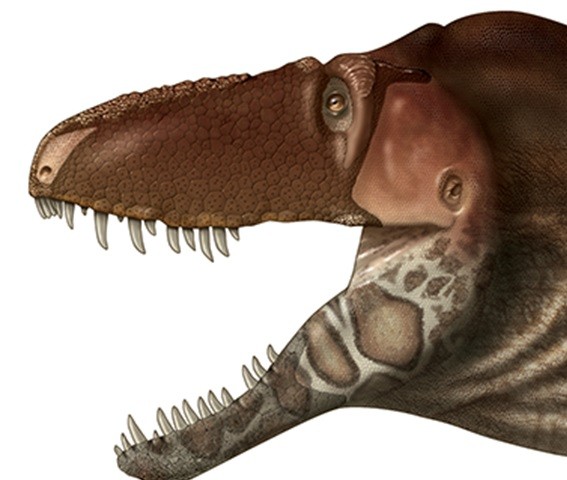By Ana Verayo, | April 01, 2017

The tyrannosaurus Daspletosaurus horneri evolved via a process known as anagenesis. (Dino Pulera/LSU Health)
Scientists have recently identified a new Tyrannosaurus rex species that evolved with no lips. This newly discovered dinosaur is called the Daspletosaurus horneri or the Horner's Frightful Lizard. It evolved directly from its Tyrannosaurus ancestors.
A team from the Louisiana State University say that this new Tyrannosaurus evolved differently through a process known as anagenesis. Anagenesis is a rare form of evolution which only occurs when a species transforms or evolves over time into a new species.
Like Us on Facebook
What's unique with the Daspletosaurus horneri is it is covered by large, flatter scales, making it appear without any lips. Its snout is also very sensitive to touch, and the rest of its skin is made of smaller scales similar to armor.
The D. horneri thrived in a region that is now known as Montana in the United States some 75 million years ago. It measures nine meters from head to tail. Its distinct features include a wide snout, small horns, and pneumatic openings within its lacrimal bone.
The team from Louisiana State University's Health Sciences Center New Orleans School of Medicine also worked with researchers from Montana State University and the University of New Mexico. During the study, the team examined fossilized skeletal parts like the skull and lower jaws of adults and juveniles.
These skulls were compared with crocodilians along with birds and mammals, and past studies to match bone textures and skin coverings. "Apart from field paleontology, we also compared the anatomy of these specimens inside a lab where we were able to dissect birds and crocodilians, which are the closest living relatives of dinosaurs. Our results revealed that there were similarities in facial nerves and arteries, that we were able to reconstruct the face of a new tyrannosaurus species," Jayc Sedimayr from LSU Health New Orleans, said.
This new study was published in the journal, Scientific Reports.
-
Use of Coronavirus Pandemic Drones Raises Privacy Concerns: Drones Spread Fear, Local Officials Say

-
Coronavirus Hampers The Delivery Of Lockheed Martin F-35 Stealth Fighters For 2020

-
Instagram Speeds Up Plans to Add Account Memorialization Feature Due to COVID-19 Deaths

-
NASA: Perseverance Plans to Bring 'Mars Rock' to Earth in 2031

-
600 Dead And 3,000 In The Hospital as Iranians Believed Drinking High-Concentrations of Alcohol Can Cure The Coronavirus

-
600 Dead And 3,000 In The Hospital as Iranians Believed Drinking High-Concentrations of Alcohol Can Cure The Coronavirus

-
COVID-19: Doctors, Nurses Use Virtual Reality to Learn New Skills in Treating Coronavirus Patients








